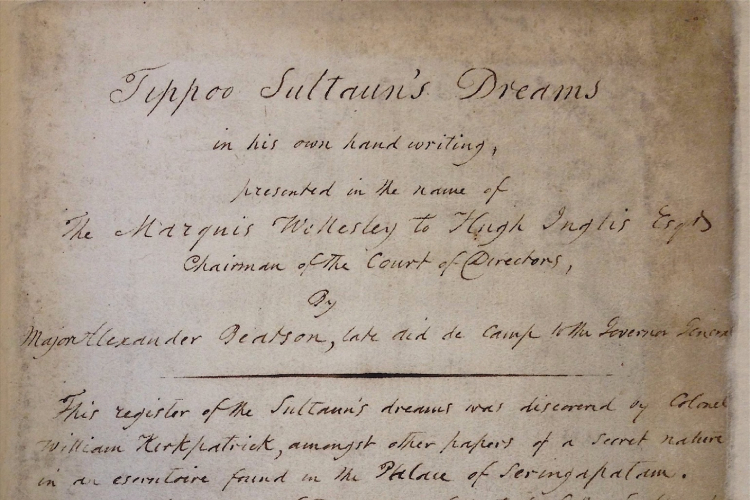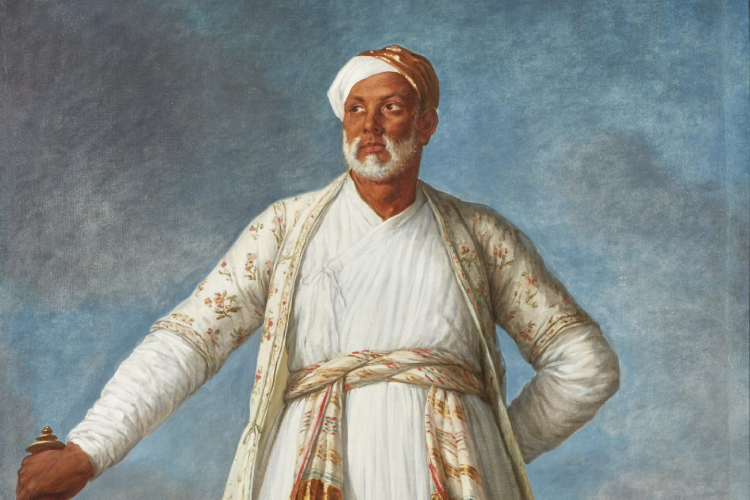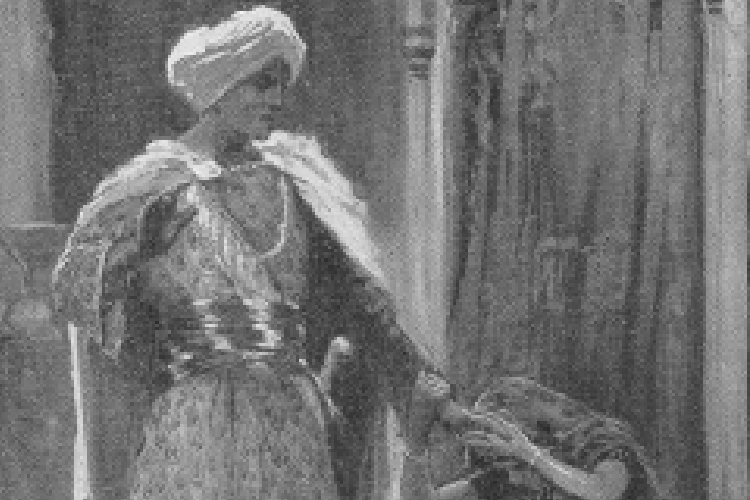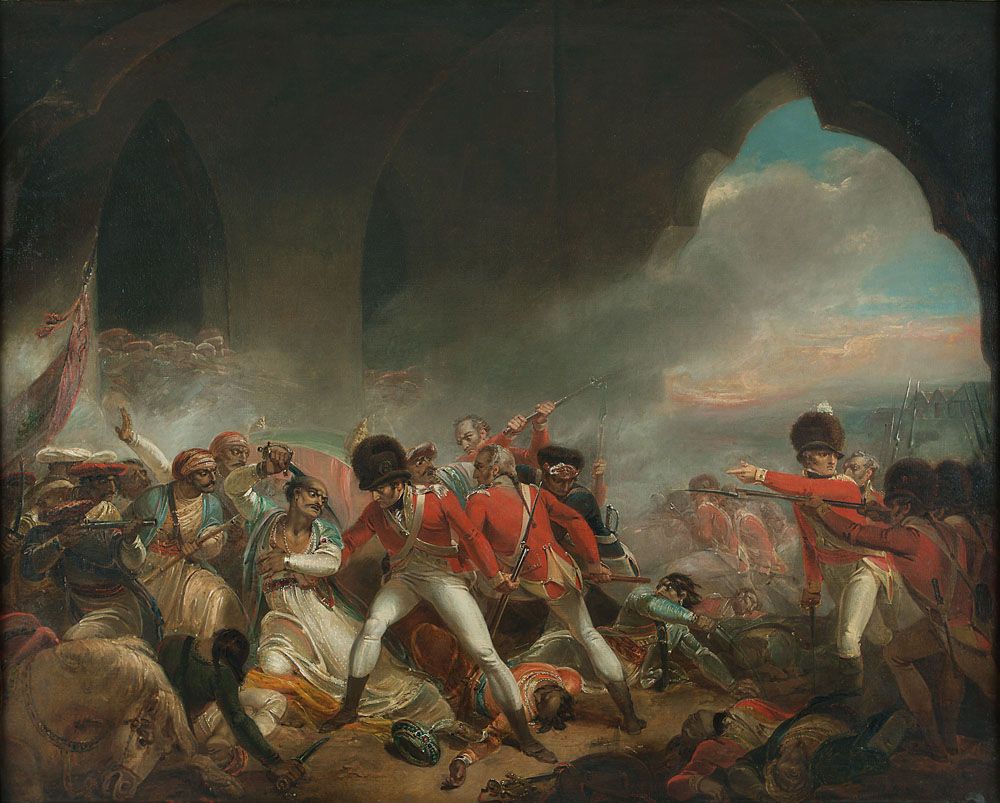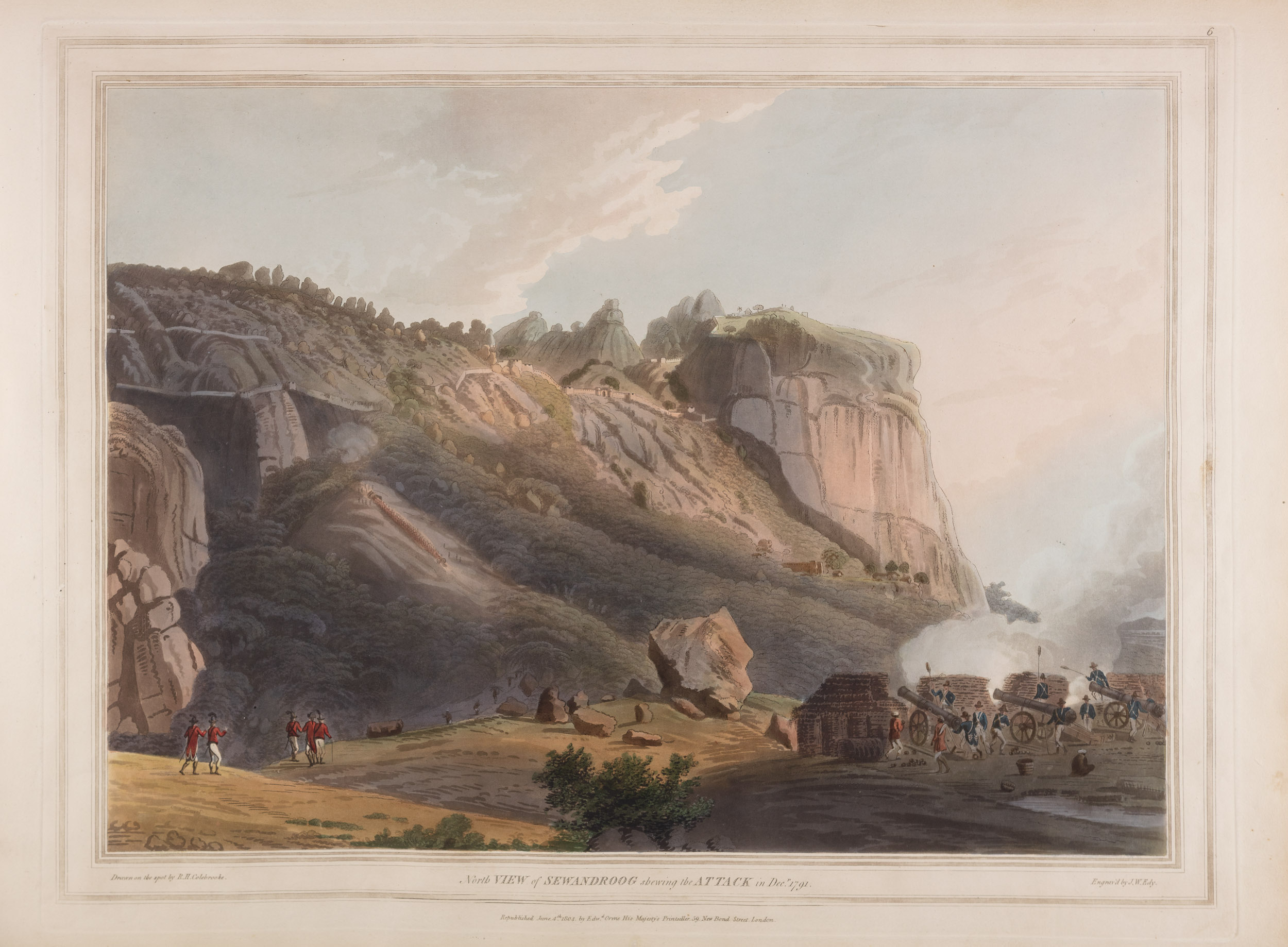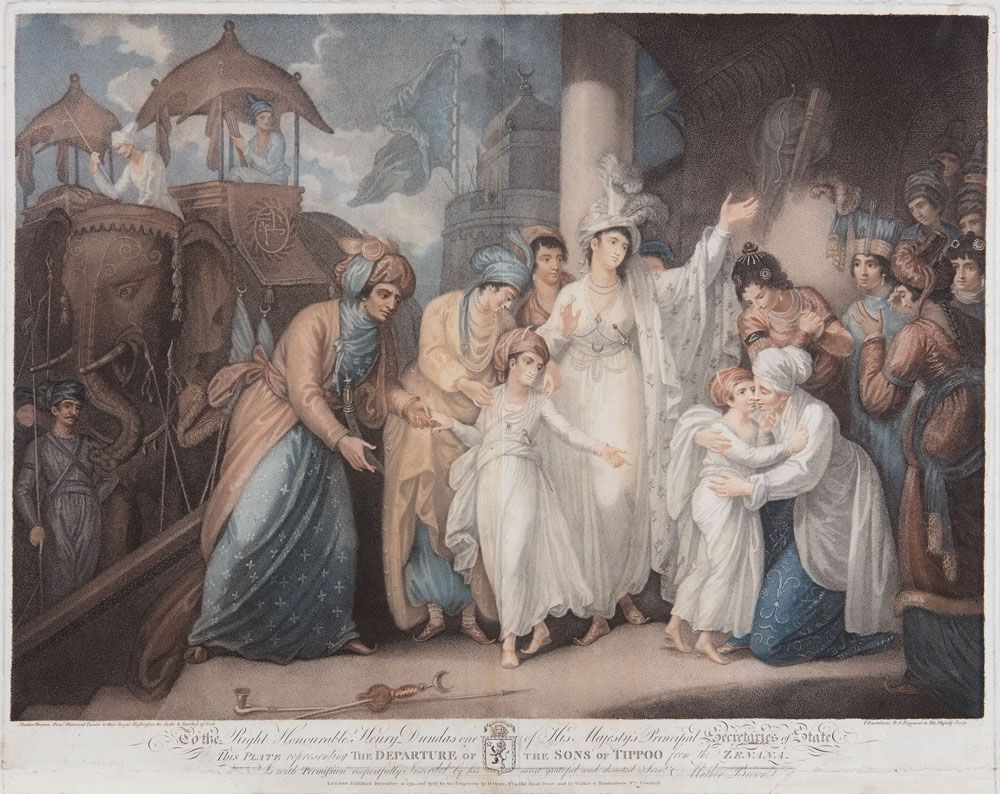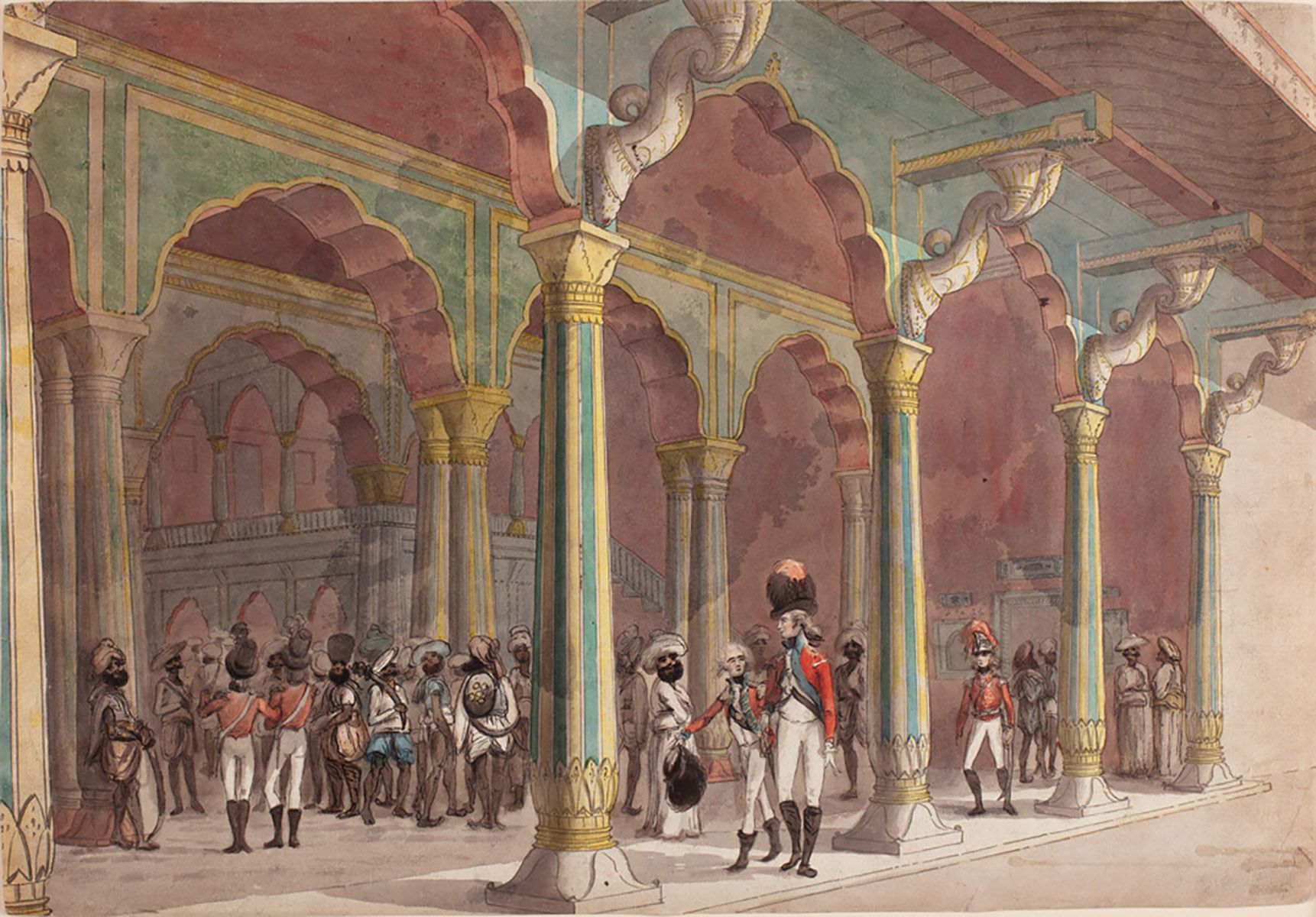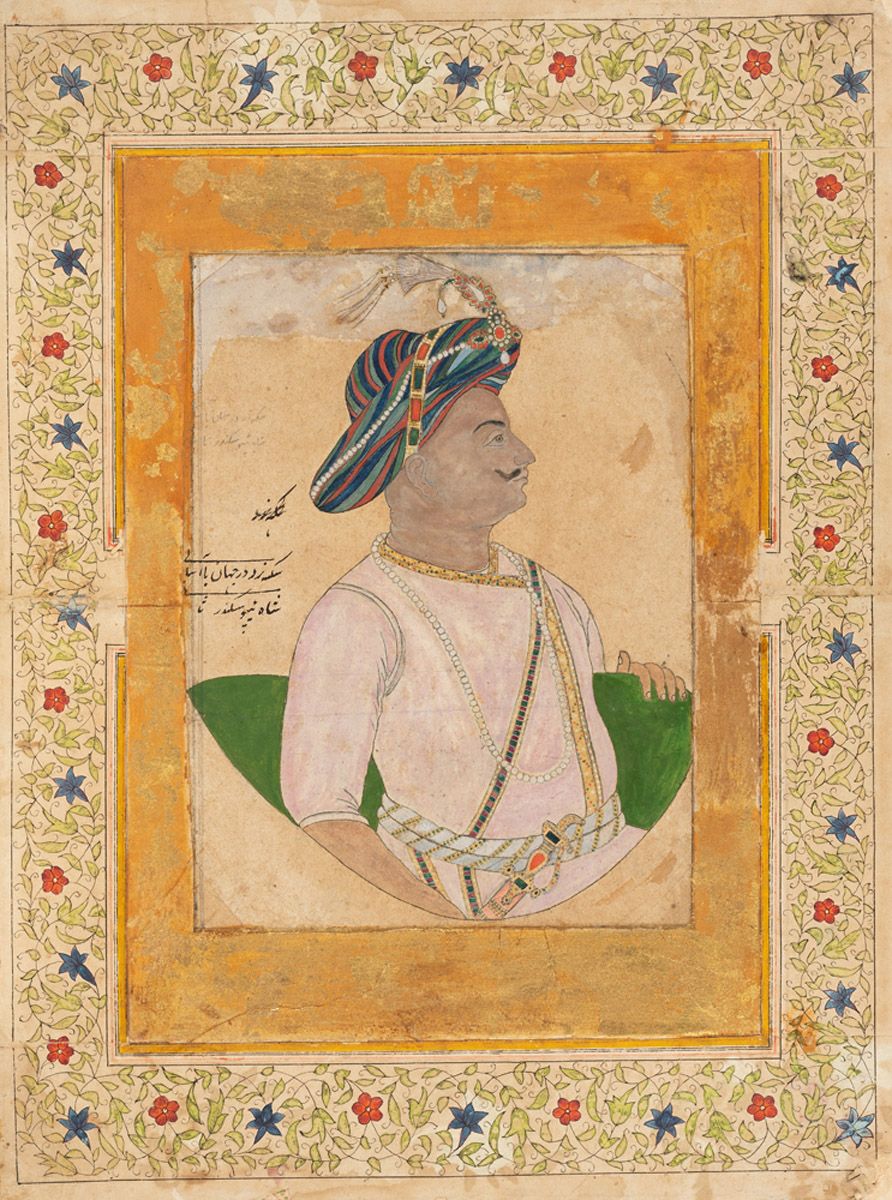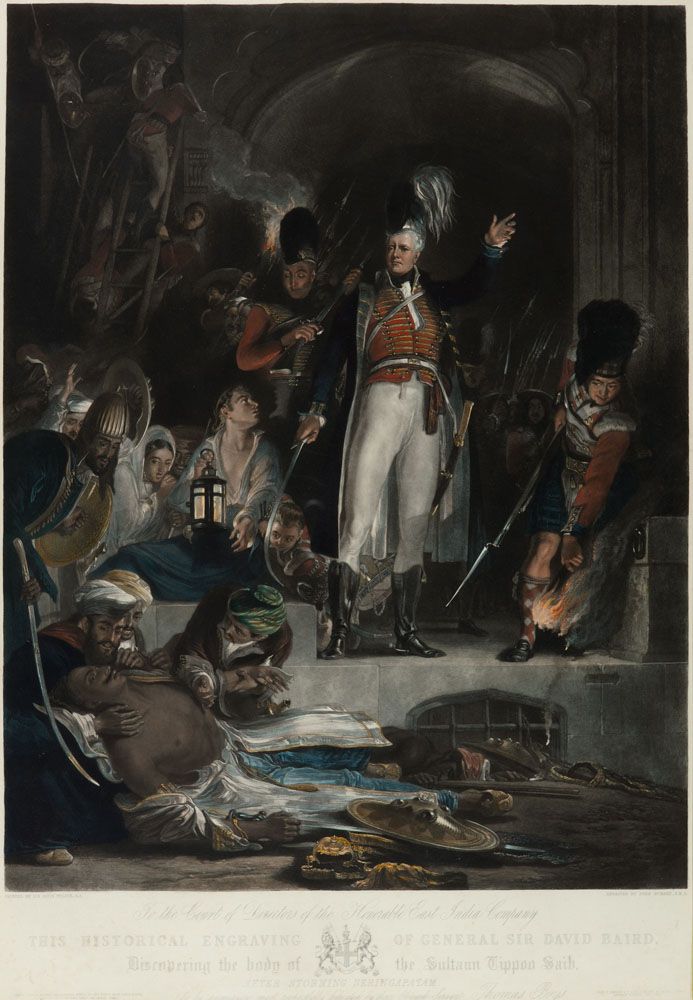Tipu Sultan
In the 18th century, as the East India Company continued to amass power, it resorted to direct military confrontation when faced with a perceived threat to its political or economic interests. Such conflicts, like the Battle of Plassey and the Battle of Buxar, is crucial to the understanding of how the East India Company acquires administrative and trading power in India. A significant case that illustrates this power shift is the case of the southern state of Mysore led by Tipu Sultan. Use these artworks in the classroom in conjunction with tools for enquiry-based thinking to spark interest in the topic and delve into the details of the historical event and its depictions.
Henry Singleton
The Last Effort and Fall of Tippoo Sultaun 1802
Oil on canvas
Robert Hyde Colebrooke
North View of Sewandroog Shewing the Attack in Decr. 1791 1804-05
Aquatint engraving, tinted with watercolour on paper
David Wilkie
General Sir David Baird Discovering the Body of the Sultaun Tippoo Sahib 1843
Engraved by John Burnet Engraving, tinted with watercolour on paper
Henry Singleton
The Body of Tippoo Sultaun Recognised by his Family 1801
Engraved by L. Schiavonetti Stipple engraving, tinted with watercolour on paper
Mather Brown
The Departure of the Sons of Tippoo from the Zenana 1793
Engraved by Francesco Bartolozzi Stipple engraving, tinted with watercolour on paper
Robert Ker Porter
The Last Effort of Tippoo Sultaun in Defence of the Fortress of Seringapatam - The Storming of Seringapatam - The Glorious Conquest of Seringapatam (triptych) 1802-03
Engraved by John Vendramini Stipple engraving, tinted with watercolour on paper
Anonymous
Illustration of a Trophy c. 1806
Ink, watercolour and gold pigment on paper
Alexander Allan
English Officers in the Summer Palace of Tippoo in Bangalore 1791
Watercolour on paper
Anonymous
Portrait of Tipu Sultan c. 1850
Watercolour and ink with gold leaf on paper
David Wilkie
General Sir David Baird Discovering the Body of the Sultaun Tippoo Sahib 1843
Engraved by John Burnet Engraving, tinted with watercolour on paper
David Wilkie
Preparatory Sketch for Supporting Figures 1834
Satirical Print
British Museum
The military might of Haider Ali and Tipu Sultan posed the biggest threat to the project of colonisation of the Indian subcontinent.
How did the Brits back home react to the crushing defeat of their countrymen at the hands of Tipu Sultan?
Tipu Sultan’s dream book
British Library
Tipu Sultan was acknowledged and respected as a fierce combatant and prudent leader, even by his opponents.
What went on in the depths of his subconscious? Delve into the dreams that reflect the hopes and fears that Tipu held within him.
Gifts of the Sultan: The Fashion Influence of Tippoo-Saïb
Piecework Magazine
Tipu Saïb’s diplomatic foresight complemented his military acumen, as evidenced in his attempts to form an alliance with King Louis XVII of France. But did you know the French court was fascinated by the garments that Tipu’s ambassadors donned?
Find out how the cultural flair carried in the clothing of three ambassadors shaped the fashion sense of the French court.
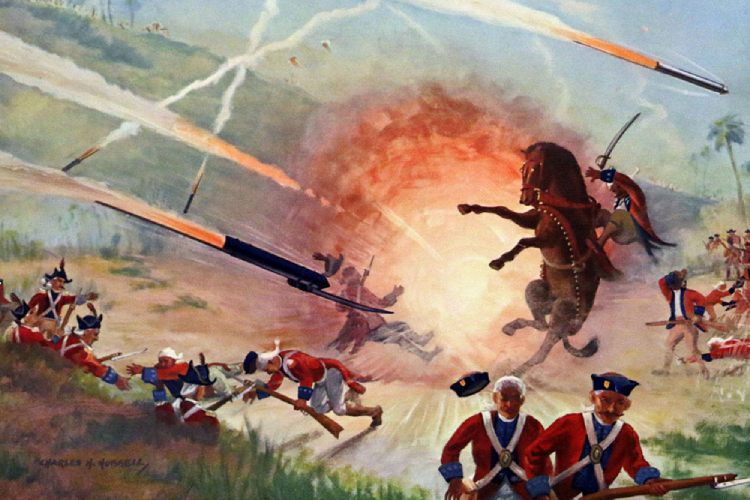
WATCH: Tipu Sultan's Unexploded 18th Century Rockets Discovered In Karnataka
Outlook Magazine
Did you know that an Indian innovation under Tipu Sultan’s supervision inspired the creation of the British Congreve rockets?
Check out the Mysorean rockets that fascinated even the Missile Man of India, former president, Dr. APJ Abdul Kalam.
The Tiger of Mysore, by G. A. Henty, Illustrated by W. H. Margetson
Project Guttenburg
Tipu Sultan was the subject of many fictional works including books for children. Widely beloved author G. A. Henty, whose stories often revolve around fictional boy heroes during fascinating periods of history, introduces his readers to Dick Holland, whose father is supposed to be a captive of Tippoo Saib.
Follow Dick on his adventures as he joins Cornwallis’ army and then travels across Srirangapatna and Mysore in disguise and explore how Tipu is constructed to be the villainous tyrant of yore.
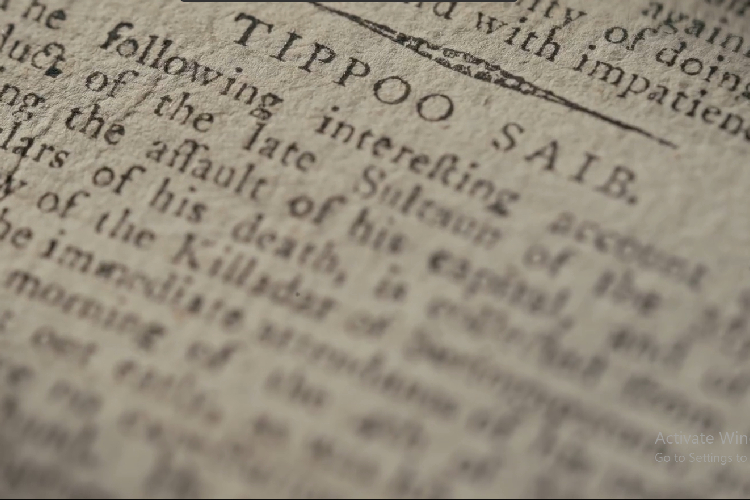
The Last Effort and Fall of Tippoo Sultaun by Henry Singleton
Delhi Art Gallery
Tipu Sultan was the subject of mass fascination to colonial historians and the British public alike.
Watch author and parliamentarian Shashi Tharoor and art historian Giles Tillotson explain the lively imagination deployed in Henry Singleton’s painting that depicts the British assault on Seringapatam and the killing of its ruler, Tipu Sultan, exploring the complex entanglements of myth and history surrounding the event.




